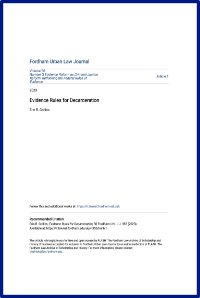By Ronald Wright and Jenny Roberts
This review collects and critiques the academic literature on criminal defense lawyering, with an emphasis on empirical work. Research on criminal defense attorneys in the United States has traditionally emphasized scarcity of resources: too many people facing criminal charges who are “too poor to pay” for counsel and not enough funding to pay for the constitutionally mandated lawyers. Scholars have focused on the capacity of different delivery systems, such as public defender offices, to change the ultimate outcomes in criminal cases within their tight budgetary constraints. Over the decades, however, theoretical understandings of the defense attorney's work have expanded to include client interests outside the criminal courtroom, reaching the broader social conditions connected to the alleged criminal act. Researchers have responded by asking a broader range of questions about the effectiveness of defense counsel outside the courtroom and by using improved data to study the effectiveness of lawyers at discrete procedural stages.
Annual Review of Criminology. Vol. 6:241-264 (Volume publication date January 2023)





















